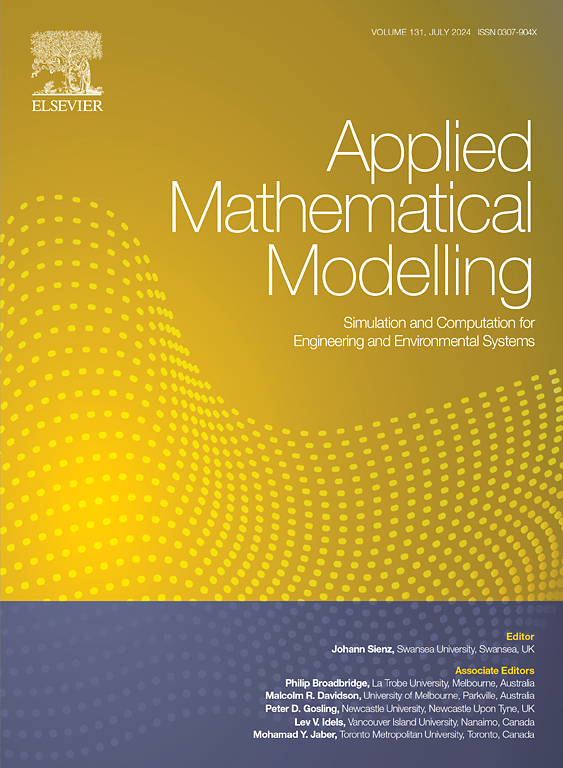Symplectic approach for accurate buckling analysis in decagonal symmetric two-dimensional quasicrystal plates
IF 4.4
2区 工程技术
Q1 ENGINEERING, MULTIDISCIPLINARY
引用次数: 0
Abstract
This study employs a symplectic approach to investigate the buckling behavior of decagonal symmetric two-dimensional quasicrystal plates. The symplectic approach, known for its high flexibility and broad applicability, has become an essential tool in elasticity theory for addressing complex boundary conditions and material characteristics. Quasicrystalline materials exhibit unique elastic responses due to their quasiperiodic structures, which pose challenges that traditional semi-inverse methods often cannot handle. In contrast, the symplectic approach simplifies the analytical process of high-order differential equations without requiring additional potential functions, making variable separation and eigenfunction expansion more efficient. To effectively apply the symplectic approach, this study transforms the governing equations into Hamiltonian dual equations, enabling precise solutions to the eigenvalue problem to identify critical buckling loads and analyze buckling modes under six typical boundary conditions. The results are validated through comparison with existing literature, further demonstrating the reliability and accuracy of the symplectic approach in such problems. Additionally, this study systematically explores the effects of geometric parameters (such as aspect ratio and thickness-to-width ratio), coupling constants, and their influence on phason field elastic constants, revealing their critical roles in the buckling modes of quasicrystal plates. This research provides a new theoretical perspective on the stability analysis of quasicrystal plates, showcasing the unique advantages of the symplectic approach in the analysis of complex structures and materials.
十角对称二维准晶板屈曲精确分析的辛方法
本研究采用辛方法研究了十角对称二维准晶板的屈曲行为。辛方法以其高灵活性和广泛适用性而闻名,已成为弹性理论中解决复杂边界条件和材料特性的重要工具。准晶材料由于其准周期结构而表现出独特的弹性响应,这给传统的半逆方法带来了挑战。相比之下,辛方法简化了高阶微分方程的解析过程,而不需要额外的势函数,使变量分离和特征函数展开更加有效。为了有效地应用辛方法,本研究将控制方程转化为哈密顿对偶方程,使特征值问题的精确解能够识别临界屈曲载荷并分析六种典型边界条件下的屈曲模态。通过与已有文献的比较验证了结果,进一步证明了辛方法在这类问题中的可靠性和准确性。此外,本研究系统地探讨了几何参数(如长径比和厚宽比)、耦合常数及其对相场弹性常数的影响,揭示了它们在准晶板屈曲模式中的关键作用。本研究为准晶板的稳定性分析提供了新的理论视角,展示了辛方法在复杂结构和材料分析中的独特优势。
本文章由计算机程序翻译,如有差异,请以英文原文为准。
求助全文
约1分钟内获得全文
求助全文
来源期刊

Applied Mathematical Modelling
数学-工程:综合
CiteScore
9.80
自引率
8.00%
发文量
508
审稿时长
43 days
期刊介绍:
Applied Mathematical Modelling focuses on research related to the mathematical modelling of engineering and environmental processes, manufacturing, and industrial systems. A significant emerging area of research activity involves multiphysics processes, and contributions in this area are particularly encouraged.
This influential publication covers a wide spectrum of subjects including heat transfer, fluid mechanics, CFD, and transport phenomena; solid mechanics and mechanics of metals; electromagnets and MHD; reliability modelling and system optimization; finite volume, finite element, and boundary element procedures; modelling of inventory, industrial, manufacturing and logistics systems for viable decision making; civil engineering systems and structures; mineral and energy resources; relevant software engineering issues associated with CAD and CAE; and materials and metallurgical engineering.
Applied Mathematical Modelling is primarily interested in papers developing increased insights into real-world problems through novel mathematical modelling, novel applications or a combination of these. Papers employing existing numerical techniques must demonstrate sufficient novelty in the solution of practical problems. Papers on fuzzy logic in decision-making or purely financial mathematics are normally not considered. Research on fractional differential equations, bifurcation, and numerical methods needs to include practical examples. Population dynamics must solve realistic scenarios. Papers in the area of logistics and business modelling should demonstrate meaningful managerial insight. Submissions with no real-world application will not be considered.
 求助内容:
求助内容: 应助结果提醒方式:
应助结果提醒方式:


